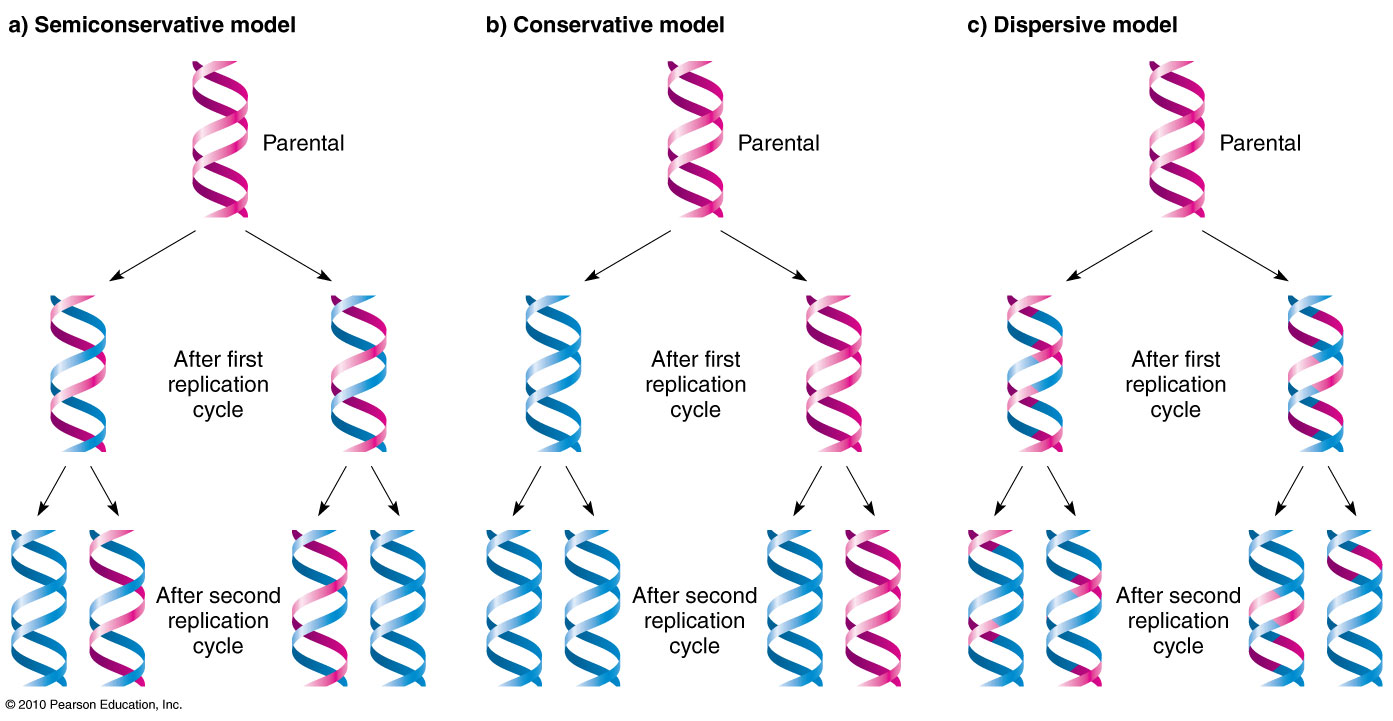
Semi-Conservative,
Conservative,
& Dispersive models of DNA replication
In the semi-conservative
model, the two
parental strands separate and each makes a copy of itself.
After one
round of replication, the two daughter molecules each
comprises one old
and one new strand. Note that after two rounds, two of the
DNA
molecules consist only of new material, while the
other two contain one
old and one new strand.
In the conservative
model, the parental
molecule directs synthesis of an entirely new
double-stranded molecule,
such that after one round of replication, one molecule is
conserved as
two old strands. This is repeated in the second round.
In the dispersive
model, material in the
two parental strands is distributed more or less randomly
between two
daughter molecules. In the model shown here, old material
is
distributed symmetrically between the two daughters
molecules. Other
distributions are possible.
The semi-conservative
model is the intuitively appealing model, because
separation of the two
strands provides two templates, each of which carries all
the information of the
original molecule. It also turns out to be the correct one
(Meselson & Stahl 1958).